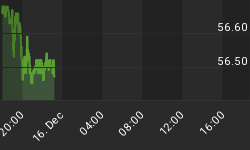The debate over deflation/inflation continues as some of our most astute economic observers take sides. It is interesting for me to see some great commentators take opposing positions on one of the most important topics of our time. Frankly, I think that both sides are missing part of the picture. The debate concentrates on the after shocks of inflation/deflation: prices.
"Prices" are the visible barometer that both sides of the debate gauge. The inflationists see (or warn about) "rising prices". The deflationists see (or warn about) "falling prices". There are very convincing cases by both sides.
In "real time" October 2009, the deflationists seem to have the upper hand. They point out that we have a "deflationary economic environment" due a variety of factors that are contributing to falling prices (such as deleveraging and unemployment). Inflationists see the current stage being set for future rising prices due to factors such as expanding money supply and a weakening dollar. What is the real deal?
First, let's set the record straight on the terms...
Inflation: Is the condition where more money (such as a paper currency) is created by the issuing authority (the government's central bank) and this growing supply of money is chasing a fixed basket of goods and services (and/or assets). Inflating the money supply ("monetary inflation") is the problem and the symptom is usually rising prices ("price inflation"). Inflation is not the price of things going up...it is the price (or value) of money going down.
Deflation: Generally the opposite...The money supply is stable or shrinking relative to the supply of stuff we buy and subsequently there is less money chasing goods and services. In this case, the "value" of money usually increases.
Therefore, for prices to rise there needs to be more (and growing) money supplied to the market relative to what is being bought. Two things need to happen for prices to rise from an inflationary perspective:
- More money needs to be created.
- This money needs to "chase" what is being purchased (Think "circulation" or "velocity").
This is a crucial point. Prices won't go up just because the money supply expands; the money has to be actively "chasing" those goods or services (or assets) for the prices to see upward movement. For prices to go up ("price inflation"), you need monetary inflation (increasing the money supply) and velocity (the money is chasing goods, services and/or assets).
In recent years, the money supply has indeed expanded dramatically...but...relatively little "chasing" has been going on. If the Federal Reserve instantly created $10 trillion dollars and gave it to you, that is definitely monetary inflation but...if you merely put it in your sock drawer and hoard it, then it would not circulate (chase stuff) and therefore you wouldn't see "price inflation".
This is where part of the confusion and controversy is. Inflationists point out that money supply is growing dramatically and they are correct. Deflationists point to falling prices in many areas of the economy and they are also correct. Here is what we should be aware of...
THE PRICES OF GOODS, SERVICES AND ASSETS ARE MOST AFFECTED BY TWO FUNDAMENTAL FACTORS:
- THE MONEY SUPPLY (primarily enacted by government)
- DEMAND AND SUPPLY (primarily enacted by the marketplace)
Understanding the money supply (its growth or shrinkage) coupled with understanding "demand and supply" will give you a better picture of the economy. This, in turn, will make you a better analyst, money manager or investor. More on this in Part II.
















